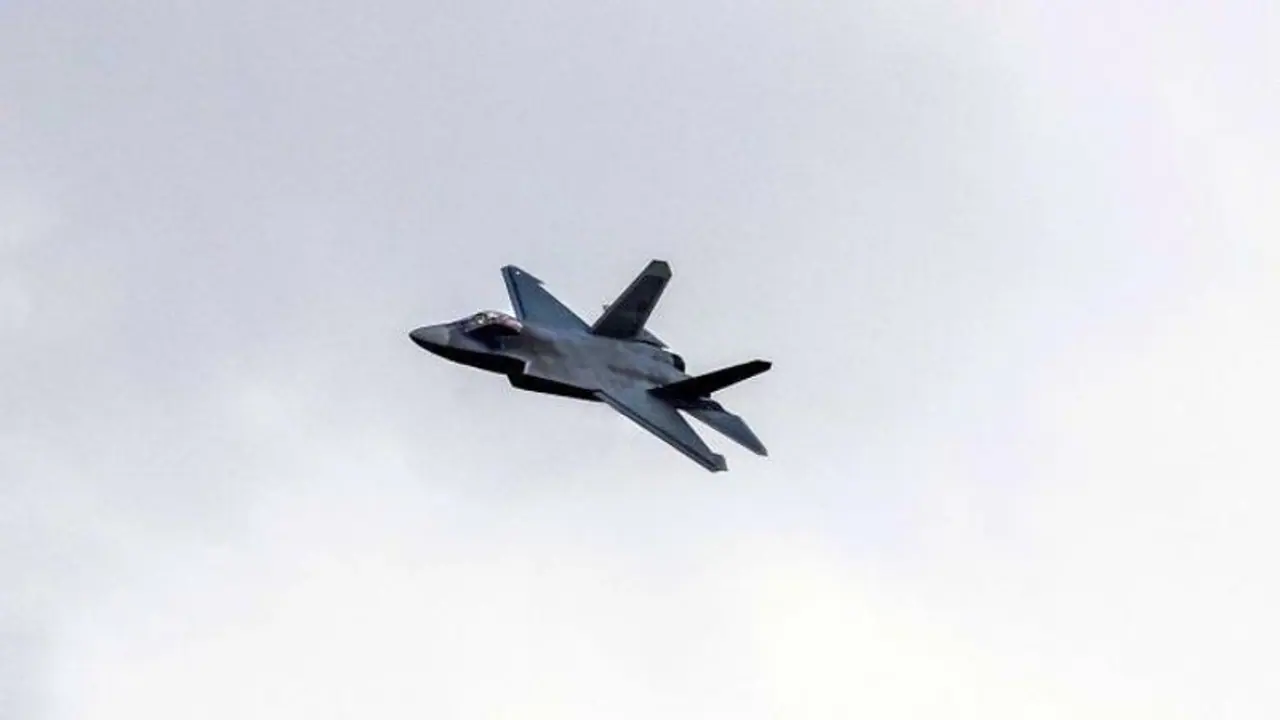While no official trade contract has been signed, the statement indicates strong enthusiasm from the Pakistan Air Force. If realized, Pakistan would be the first overseas customer for China's J-31, impacting regional dynamics, especially concerning India's air capabilities. Girish Linganna reports
Following the acquisition of J-10 fighter jets, the Pakistani military has now developed an interest in flying stealth fighter jets manufactured by China. According to several reports published in Pakistani media outlets, General Zaheer Ahmed Babar, the Chief of Staff of the Pakistan Air Force, inspected a Pakistan Air Force combat base. The inspection took place on January 1. During the base inspection, Babar gave a significant speech in which he disclosed the most recent developments in the Pakistan Air Force's acquisition of stealth fighter jets manufactured in China.

During his speech, he made it obvious that Pakistan is prepared to acquire the Chinese J-31 stealth fighter -- "I believe that in the near future, the J-31 fighter will become Pakistan's most powerful fighter."
Although this does not signify that China and Pakistan have officially signed a military trade contract, it is sufficient evidence to demonstrate that the Pakistan Air Force has extremely high enthusiasm and expectations for purchasing Chinese stealth fighters.
Furthermore, this statement is a signal to China to some degree. The signal suggests that China should sign the contract as quickly as feasible and provide Pakistan with J-31 stealth fighter fighters as quickly as possible.
If the transaction is finalised, Pakistan is anticipated to become the first overseas customer of China's stealth fighter and the first overseas customer of the J-31 fighter jet. This is for a product that has been touted for a considerable time but has not yet been delivered. A significant amount of support and encouragement will be provided for the J-31 fighter project, a stealth fighter that was unsuccessful in selling.
This would also significantly impact India, making Pakistan the first country in the South Asian peninsula to equip stealth fighter jets. As a result, the Indian Air Force will be forced to contend with the disadvantage of "crushing by generation difference" when competing with the Pakistan Air Force. Consequently, after Pakistan acquires the J-31, India will find means to acquire stealth aircraft such as the F-35 or perhaps the Su-57 to compete with Pakistan.
When the J-31 was still known as the FC-31, Rana Hussain, who was serving as Pakistan's minister of military production at the time, disclosed the following information: "Pakistan is discussing with China the introduction of the FC-31 stealth fighter to replace Aging F-16 fighter jets perform air interception and other missions."
The first government official to publicly announce Pakistan's procurement of J-10, Sheikh Ahmed, who was serving as the Interior Minister of Pakistan at the time, also provided clarification by saying, "I am not sure when the J-20 fighter jets will come to Pakistan, but we are interested in them... It's very interesting; it's the most advanced fighter jet in the world."
Compared to the FC-31 fighter jet produced ten years ago, the J-31 fighter jet, which has undergone significant changes, is now considered more mature and reliable and boasts fairly powerful capabilities. Its overall combat effectiveness will be stronger due to the possibility and potential for advancing aircraft based on carriers. This would further raise the attention of many countries, including Pakistan at present, which is going to be the case very probable.
On the aircraft carrier deck test platform, a model of what is believed to be a J-31 fighter was observed in the past. This observation indicates that the J-31 fighter could become China's new generation of carrier-based aircraft.
The possibility of the J-31 fighter jet being shipped to Pakistan is not completely out of the question. Pakistan's precarious financial state is perhaps the most significant obstacle to Pakistan's acquisition of the J-31. It is possible that the Pakistan Air Force would be unable to modernise and upgrade its capabilities due to the comparatively high costs associated with the stealth fighter's maintenance and support requirements. The Pakistan Air Force is eager to combat Rafale while simultaneously continuing to acquire J-10s that are less expensive. This may be more cost-effective than the acquisition of J-31s.
J-31/FC-31: What You Must Know
According to an Aviacionline article from January 2023 on the history of the J-31/FC-31, the aircraft was the result of Chinese espionage, with the PLA intelligence services stealing several terabytes of confidential information about American stealth fighters, the F-35 and F-22, including drawings and other items, more than 12 years ago. It features evident F-35 design aspects like a monolithic cockpit, an infrared search and track system (IRST), an electro-optical targeting system (EOTS), and a telescopic crew boarding ladder.
According to Aviacionline, the Chinese J-31/FC-31 fighter has a range of 2,000 kilometres, a maximum take-off weight of 28 tonnes, an operational ceiling of 15 kilometres, and a top speed of Mach 1.8 or 2,205 kilometres per hour. The J-31/FC-31's internal weapons bay is designed to hold six air-to-air or air-to-surface missiles weighing 2,268 kilogrammes. Furthermore, the aircraft can transport guided and unguided missiles on six external racks. A naval version of the J-31/FC-31, codenamed J-35, is now in development. According to the source, the J-35 is a larger variant of the J-31/FC-31, with more fuel capacity, greater stealth, and carrier-specific equipment such as a brake hook (or landing hook), variable wing sweep, and stronger chassis.
In November 2022, Aviacionline reported that the FH-97A Loyal Wingman drone is essentially an unmanned stealth aircraft armed with artificial intelligence. This drone is intended to accompany the stealth fighter J-20. According to the article, the unmanned FH-97A has a flight range of 1,000 kilometres and a maximum flight endurance of roughly six hours. The FH-97A is designed for air-to-air missions, featuring a frontal EOTS and an interior compartment for six air-to-air missiles with infrared homing heads. The aircraft can execute secondary tasks such as surveillance, suppression of enemy air defences (SEAD), electronic warfare, and air-to-air missions.
